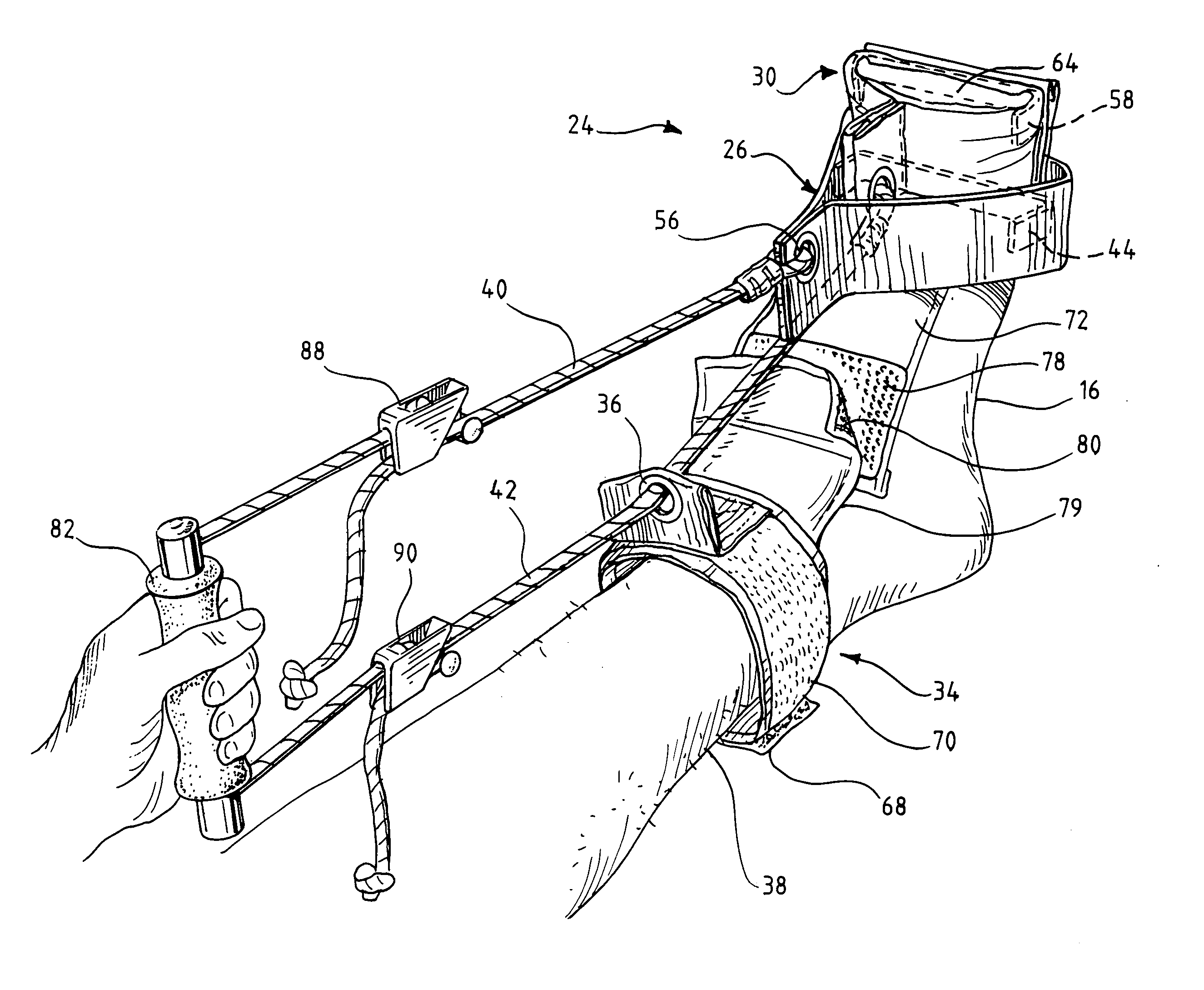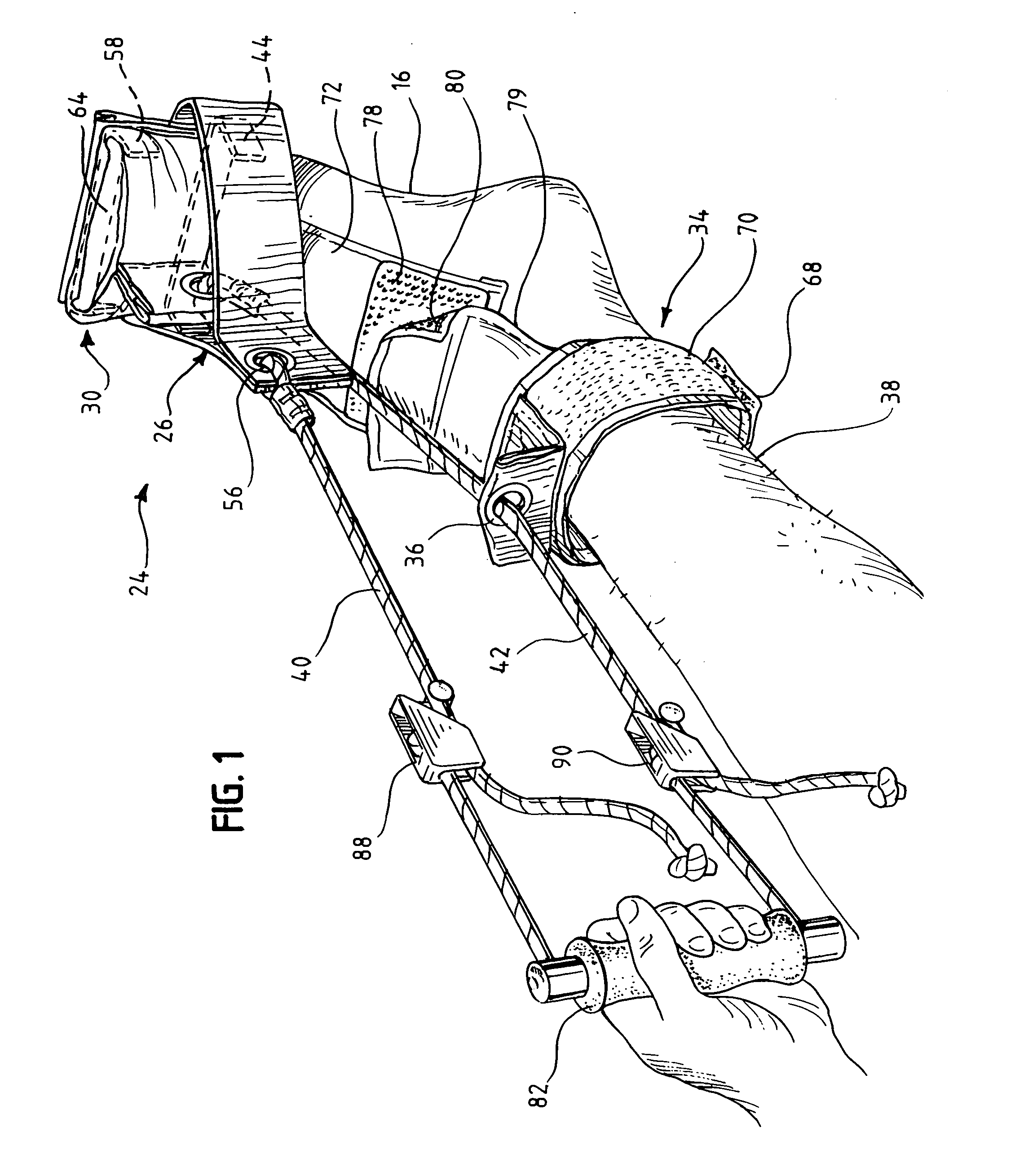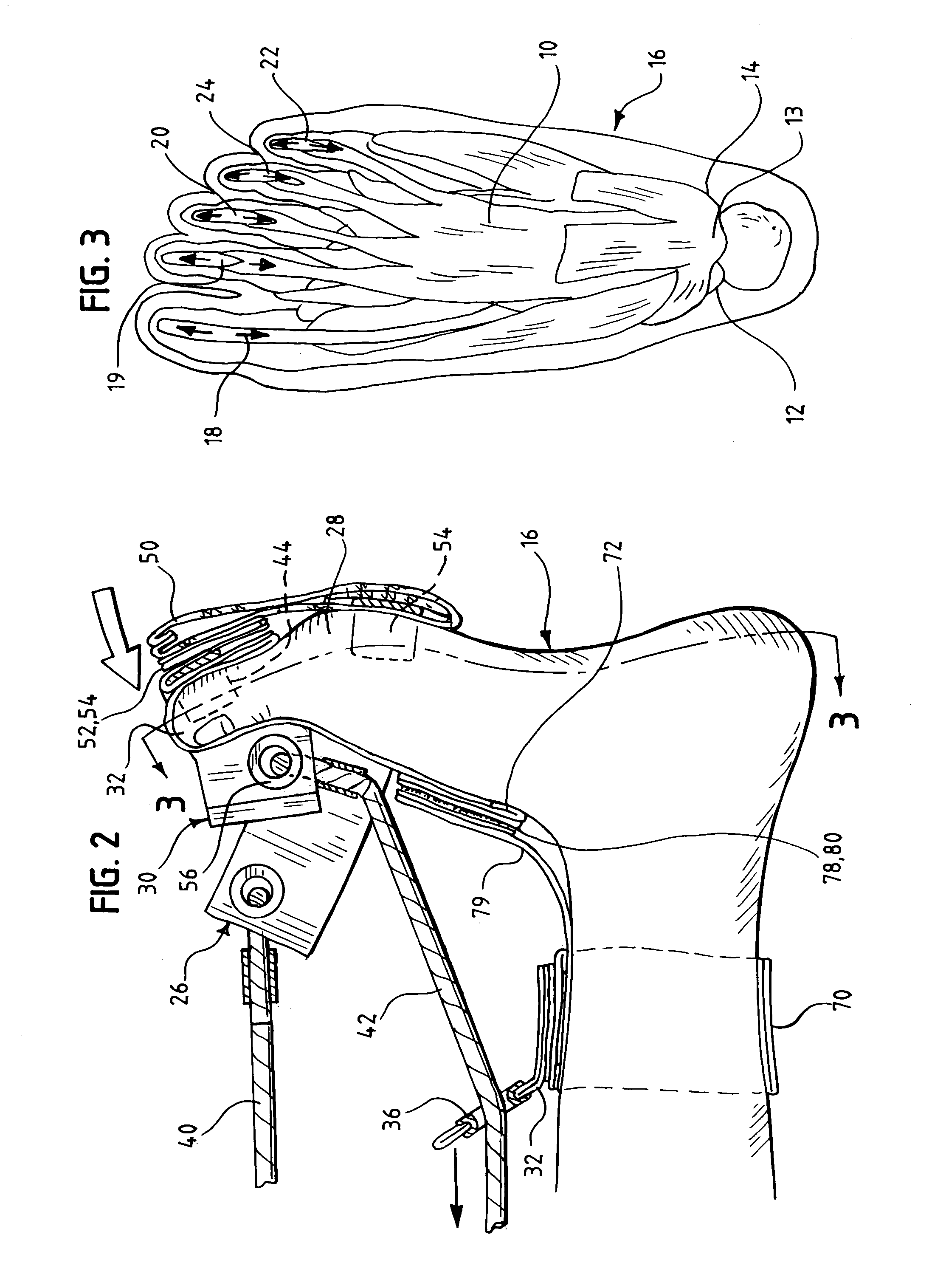Non-weight bearing foot and leg exercising apparatus
a non-weight bearing, foot and leg technology, applied in the field of non-weight bearing foot and leg exercising apparatus, can solve the problems of scar tissue formation, reducing the elasticity of plantar fascia, and causing partial tears and chronic inflammation
- Summary
- Abstract
- Description
- Claims
- Application Information
AI Technical Summary
Benefits of technology
Problems solved by technology
Method used
Image
Examples
Embodiment Construction
[0017]Referring to FIGS. 3 and 5, the plantar fascia 10 is a thick fibrous band of tissue running along the bottom of the foot from the heel to the base of the toes. When placed under too much stress, the plantar fascia becomes stretched too far causing minute tears within the fascia causing inflammation in the fascia and in the surrounding tissue. The tears are soon covered with a scar tissue, but the scar tissue is less flexible than healthy tissue and the scar tissue tends to aggravate the problem. The injury is called plantar fasciitis and is most severe in the morning when one gets out of bed or at the beginning of a run. This is because during the night or prior to exercising, the plantar fascia has become contracted and stiff and the sudden stretching of the plantar fascia, caused by applying weight to the foot in the morning, or at the beginning a run, stretches the plantar fascia unduly and aggravates the injured portions of the tissue.
[0018]The plantar fascia attaches at t...
PUM
 Login to View More
Login to View More Abstract
Description
Claims
Application Information
 Login to View More
Login to View More - R&D
- Intellectual Property
- Life Sciences
- Materials
- Tech Scout
- Unparalleled Data Quality
- Higher Quality Content
- 60% Fewer Hallucinations
Browse by: Latest US Patents, China's latest patents, Technical Efficacy Thesaurus, Application Domain, Technology Topic, Popular Technical Reports.
© 2025 PatSnap. All rights reserved.Legal|Privacy policy|Modern Slavery Act Transparency Statement|Sitemap|About US| Contact US: help@patsnap.com



